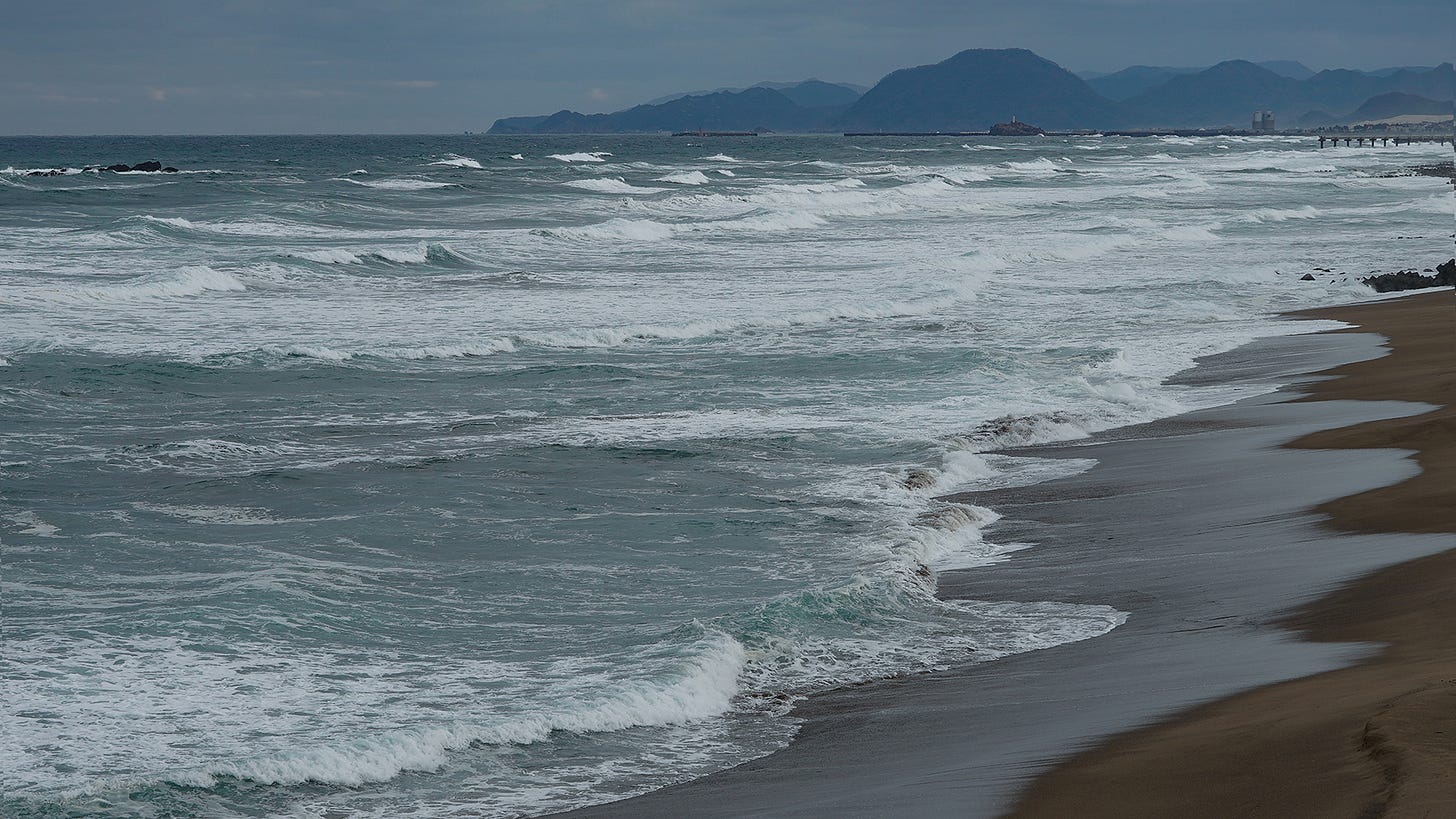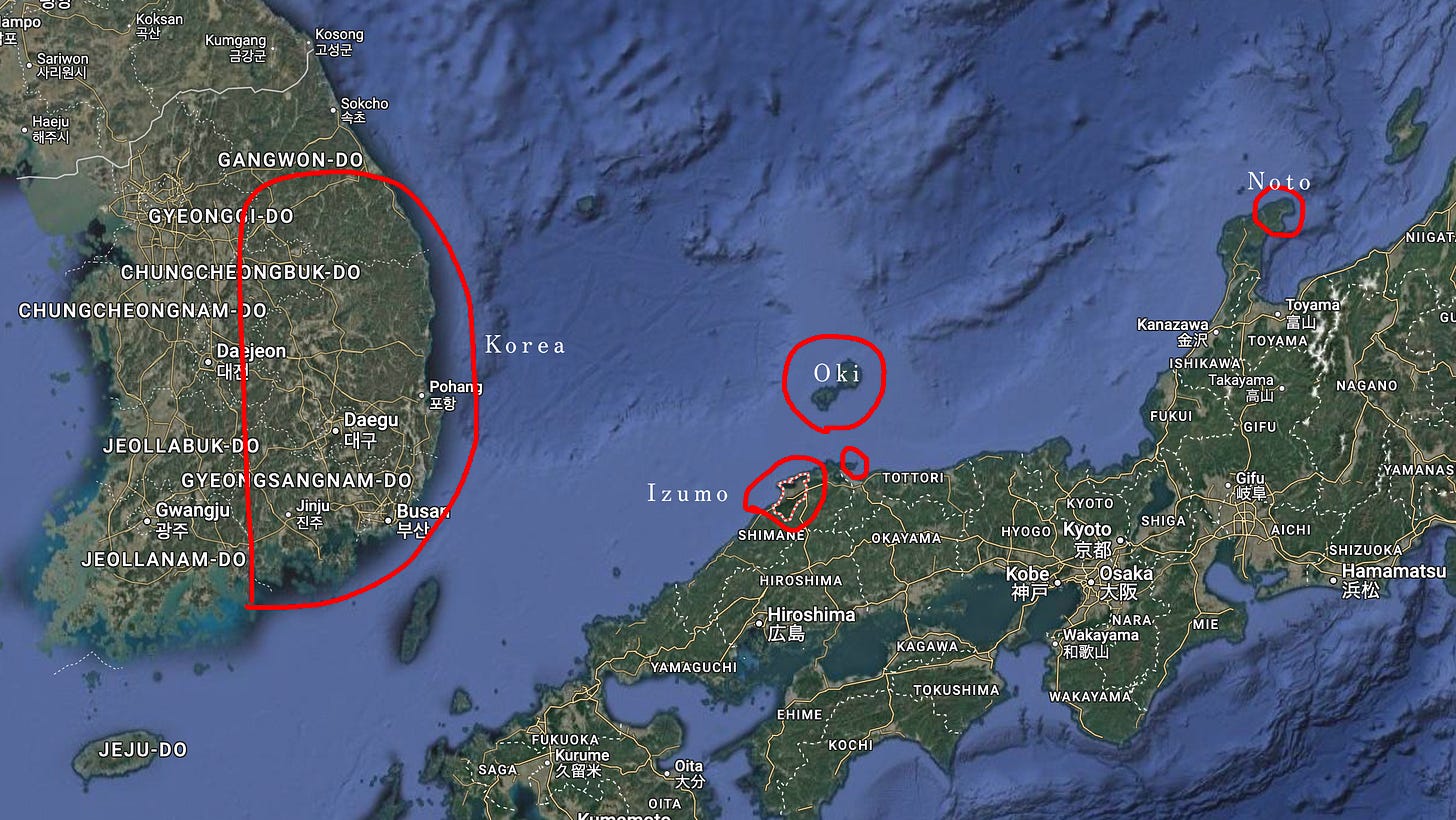Izumo Taisha and the Forgotten Power of Ancient Japan
Reexamining Izumo Taisha’s Legacy Through Myth and Power
In this article, we will explore Izumo Taisha, one of the most important Shinto shrines and an essential key to understanding ancient Japanese history.
Located in Izumo City, Shimane Prefecture, Izumo Taisha stands alongside Ise Jingu in Mie Prefecture, where Amaterasu, the ancestral deity of the imperial family, is enshrined, as one of Japan’s two great shrines. While Izumo Taisha attracts a constant stream of worshippers, much of its history remains shrouded in mystery.
The shrine’s official name is “Izumo Oyashiro”, and until the Edo period, it was known as Kizuki Taisha (杵築大社). The deity enshrined here is Okuninushi (大国主大神).
To understand ancient Izumo’s religious significance, its geography is crucial. Izumo is a small region along the Sea of Japan in the San’in area. Northward across the sea lies the Oki Islands, and this maritime route facilitated interactions, particularly with the Korean Peninsula.
Interestingly, myths recorded in the Kojiki (compiled in 712) suggest that ancient Izumo engaged in exchanges with the Korean Peninsula. One of the most well-known myths is “The White Rabbit of Inaba (因幡の白兎).”
According to the myth, Okuninushi was originally called Onamuchi (大己貴命) and was an insignificant figure among his many powerful brothers. One day, in Inaba Province (modern-day Tottori Prefecture), there was a young and beautiful princess named Yagami-hime (八上比売), whom many kami sought to marry. The brothers set out to reach Inaba, traveling along the coastal route, while Onamuchi, carrying their baggage, lagged far behind.
During his journey, he came across a wounded white rabbit suffering on the seashore. The rabbit had attempted to cross from Oki Island to the mainland by tricking a group of wani (鰐, often interpreted as sharks or crocodiles) into forming a bridge. However, after mocking them once he nearly reached the mainland, the angry wani attacked and injured him.
There are different interpretations of the wani. Traditionally, it has been thought to refer to a species of shark called “wanizame (鰐鮫).” However, this theory is questionable. More recent ethnological research suggests that this “wani” may symbolize a group of people who migrated from tropical regions where crocodiles exist, connecting the story to broader Asian mythology.
This leads to an intriguing possibility: a group of people may have migrated from the Asian continent via the Korean Peninsula to Oki Island, and then to the coast of present-day Tottori Prefecture. In this myth, they are represented as the white rabbit.
Onamuchi’s brothers deceived the suffering rabbit by telling him to wash in seawater and dry himself in the wind, which only worsened his pain. When Onamuchi finally arrived, he advised the rabbit to wash in fresh water and lie on cattail flowers, which miraculously healed him.
In gratitude, the white rabbit predicted that Yagami-hime would choose Onamuchi as her husband, and indeed, she did, rejecting his brothers.
This myth carries important implications—it suggests that Onamuchi alone possessed medical knowledge unknown to his brothers. This implies that Okuninushi (Onamuchi), later revered as the kami of Izumo, had acquired ancient Chinese medical knowledge through interactions with people from the Korean Peninsula.
While neither the Kojiki nor the Nihon Shoki explicitly records this, a crucial text for understanding ancient Izumo is the “Izumo no Kuni Fudoki” (出雲国風土記, Records of the Province of Izumo).
The Fudoki (風土記) were historical records compiled under Empress Genmei’s reign (707–715), gathering ancient traditions from various regions under imperial order. Although these records were produced in provinces closely connected to the imperial court in Yamato (present-day Nara Prefecture), only the Izumo Fudoki has survived almost intact. Most others were lost, leaving only fragments.
One unique myth found in the Izumo Fudoki but absent in the Kojiki and Nihon Shoki is the “Kunibiki Myth” (国引き神話, Kunibiki Shinwa). According to this story, the kami of Izumo, equivalent to Okuninushi, expanded his narrow land by pulling together pieces of other regions to form a larger country.
The myth describes Izumo, the coastal areas of Shimane Prefecture, the Oki Islands, parts of the Noto Peninsula, and—most intriguingly—the southeastern part of the Korean Peninsula as part of this expansion. This strongly suggests that ancient Izumo had deep connections with these regions.
Ancient Izumo is said to have once boasted unparalleled power in Japan. Evidence of this is the legend of a massive shrine—far larger than today’s Izumo Taisha.
Historical records indicate that in antiquity, Izumo Taisha featured a towering sanctuary reaching 48 meters (157 feet) in height—twice the size of the present shrine.






